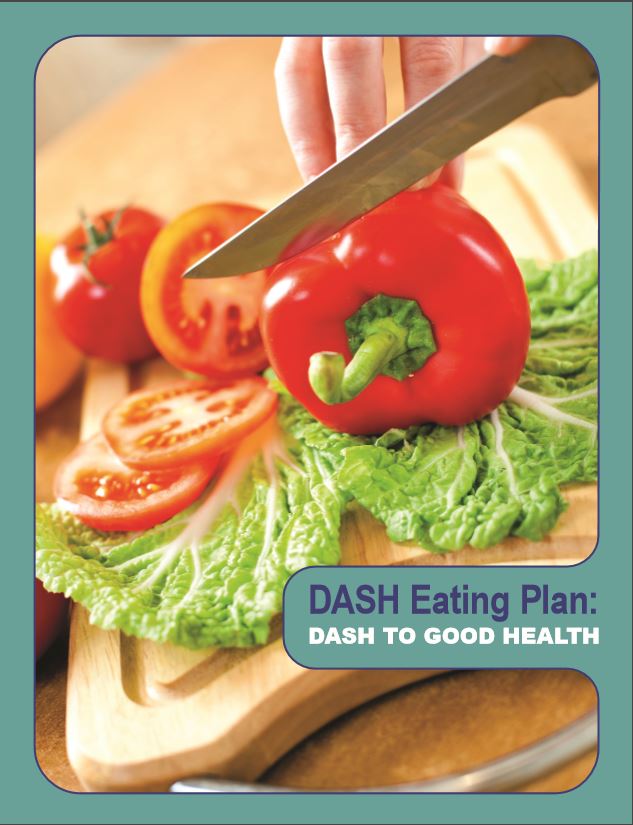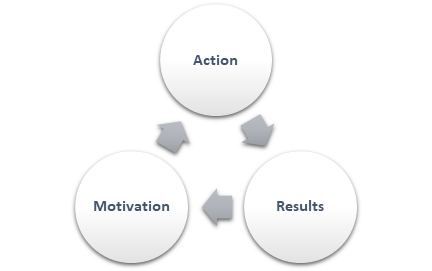Tag: health info
New Year, New Habits

How to Create Habits That Stick
A new year is a fresh start and a great time to focus on creating (or re-establishing) healthy habits! Use these tips for making your new habits stick.
Anchor Your New Habits
Much of our daily life is taken up by habits that we have formed over our lifetime. Habits can be almost automatic, meaning we do not even recognize that we are doing them. One of the more effective ways to add a new habit to your routine is to anchor it to an existing behavior you consistently do. For most of us brushing our teeth in the morning is a habit we established long ago, and something we rarely give much thought. The habit of brushing your teeth is anchored to the act of waking up in the morning: “Every day after I wake up, I brush my teeth.”
A habit anchor is a simple, yet powerful, tool to help new habits stick.
Example: Follow these three steps to anchor a new habit.
- Make a list of existing habits that you perform every day around the same time. Waking up, going to bed, showering, getting dressed, eating lunch…these are all great examples of things most of us do daily.
- Pick an anchor from your list of options that best corresponds with the little habit you want to add.
- Write down your little habit as a statement along with your anchor:
- “After I turn on the coffee pot in the morning, I will drink an 8 oz glass of water.”
- “After I eat lunch, I will go on a 5-minute walk.”
- “After I buckle my seat belt, I will take three deep breaths.”
- “After I put on my pajamas, I will read 10 pages of my book.”
ARM Yourself for Success
Lack of motivation is one of the most cited barriers to change, this is especially true after the shine of a new year wears off. How do we keep ourselves motivated for weeks, months, and years after we decide to make a change? Contrary to popular believe, action precedes motivation. This means that starting with a small, simple act can lead to feelings of motivation, and ultimately inspire you to keep going.
ARM yourself for change by using the Action-Results-Motivation model. The trick to the ARM method for building habits is to make the initial action small. Make it so small that you have no excuse not to do it.
Starting with a small, consistent action is the key to building momentum, and ultimately, motivation.
Example: If you want to start walking 30 minutes a day, you can begin by creating a habit to take a 5-minute walk after lunch.
- Action: Take a 5-minute walk after lunch.
- Results: I notice that I feel more alert, energized, and ready for my afternoon. I also get a burst of pride when I cross it off as “complete” on my to-do list.
- Motivation: Knowing how I will feel after my 5-minute walk motivates me to keep doing it daily and increase my walking time.
Before you know it, you have incorporated this small walking habit into your routine and are consistently extending your walks until you reach your goal of 30 minutes a day.
Lose the All or Nothing Thinking
When you engage in all or nothing thinking, you assess situations in extreme terms. You think you will either be a total success or a total failure. This is an inaccurate way of thinking because life is not black and white – it’s grey. It is far too easy to get stuck on the notion that if we can’t do something perfectly, it’s not worth doing. That is simply not true! We often find success when we embrace the squishiness that is the middle ground. If your car ran out of gas, would you refuse a partial gallon from an emergency gas can simply because it wouldn’t be enough to fill the entire tank? NO! The same idea applies to behavior change.
Consider all the ways you could work toward your goals, no matter how imperfect the strategies may seem. Something is always better than nothing. Take time to celebrate even the tiniest, most imperfect, success!
Example: Avoid all or nothing thinking by finding success in small ways.
- Maybe you don’t have time for an hour walk…but you can take a 5-minute walk.
- Maybe the only thing in the refrigerator for dinner is leftover pizza…but you can add some broccoli you found in the freezer on the side.
- Maybe you lost your temper at your kids because you are stressed…but you can still apologize and practice some deep breaths together.
Goal Setting
Resolutions are easy to make but hard to follow through with. This is because most resolutions (I want to get healthy. I want to lose weight. I want to be more organized. I want to save more money.) are too vague and do not incorporate concrete actions. Effectively developed goals on the other hand, are specific, finite, and help you stay focused on your desired outcome.
- You can set a goal for almost anything! Whether you are training for a race, trying to eat more vegetables, or saving for a big purchase, making your goals SMART sets you up for success!
- Be purposeful in your goal setting. Choose a small number of objectives that are the most important to you. A goal should include a metric that lets you know you have accomplished it.
- It is easier to stick to a new behavior with a supportive network. Accountability can be motivating and is critical for success. Tell friends, family, and co-workers about your goals and ask them for support.
Resources
- Changing Your Habits for Better Health
- Creating Healthy Habits
- Why Behavior Change is Hard…and Why You should Keep Trying
- From family to finances to fitness, GuidanceResources® has trainings, guides, and tips to help you start the new year off right! Click the Register tab, and enter your Organization Web ID: SOIEAP.
Matters of the Heart

By: Mimi Fetzer RD, LD, with The Idaho Diabetes, Heart Disease, and Stroke Prevention Program
February is a time for love, relationships, and matters of the heart. That includes the relationship we have with our heart health. The heart pumps blood to all parts of the body. Blood carries oxygen, nutrition, hormones, and removes waste. The best way to strengthen the relationship with our heart is to adopt a healthy lifestyle.
Tips for a Heart-Healthy Lifestyle:
Reduce sodium and saturated fat intake. Instead, enjoy nutritious foods.
The heart needs a combination of nutrients to function at its best. Consuming a variety of different fruits, vegetables, whole grains, nuts, seeds, lean protein, and low-fat dairy is the best way to get these nutrients. Too much of certain nutrients, such as sodium and saturated fat, can place stress on the heart.
Examples of high sodium and saturated fatty foods include:
- Pizza such as pepperoni with full fat cheese.
- Frozen meals.
- Processed meats such as bacon, sausage, lunch meats and hot dogs.
- Snacks such as chips, jerky and shelf-stable cakes.

Quit smoking and vaping tobacco products.
Smoking is a major risk factor for heart disease. It can damage the blood cells that transport essential nutrients and compromise the function and structure of the cardiovascular system.1 Medical studies suggest cigarette and e-cigarette smoking result in abnormalities of blood flow to the heart.

For those who are ready to quit, there are resources on the Project Filter Website or call 1-800-QUIT-NOW. Project Filter has expert quit coaches and free patches, gum or lozenges to support people on their quit journey.
Prevent diabetes.
Having pre-diabetes or diabetes impacts how much glucose is in the bloodstream. Over time, high blood glucose levels can damage blood vessels causing the heart to work harder to pump blood throughout the body.2
To find out if you or a loved one is at risk for prediabetes, take the Prediabetes Risk Quiz. The results can inform conversations with your healthcare provider and encourage appropriate lifestyle changes. Diabetes Prevention Programs are offered throughout the state to decrease your risk for diabetes. This program is led by trained Lifestyle Coaches who guide a group of individuals through a series of interactive sessions. Each session features different techniques to help adopt a healthy lifestyle and prevent or delay diabetes.
Manage diabetes.
If you have been diagnosed with diabetes, talk with your healthcare provider about diabetes management and participating in a Diabetes Self-Management Education and Support Program. This program is delivered by trained healthcare professionals who can discuss how nutrition, medication, and physical activity can help manage diabetes and result in a healthy heart.
Engage in consistent physical activity.
Regular physical activity strengthens the heart’s ability to pump blood throughout the body. 3 Physical activity can also help to manage tobacco cravings resulting in smoking cessation and reduce blood glucose levels. Each week adults should exercise for 150 minutes (2 hours and 30 minutes) if it is moderate-intensity aerobic activity or 75 minutes (1 hour and 15 minutes) if it is vigorous-intensity aerobic activity.
Examples of moderate-intensity aerobic activity:
- Fast paced walking
- Vacuuming
- Water aerobics
- Softball or baseball
Examples of vigorous-intensity aerobic activity:
- Hiking uphill
- Running
- Shoveling heavy snow
- CrossFit
Remember to have a positive relationship with your heart to ensure healthy relationships with loved ones all year long!

References:
1. Smoking and Your Heart. National Heart, Lung, and Blood Institute. https://www.nhlbi.nih.gov/health-topics/smoking-and-your-heart. Accessed January 15, 2020.
2. Diabetes, Heart Disease, and Stroke. National Institute of Diabetes and Digestive Kidney Diseases. https://www.niddk.nih.gov/health-information/diabetes/overview/preventing-problems/heart-disease-stroke Accessed January 15, 2020.
3. Physical Activity and Your Heart. National Heart, Lung, and Blood Institute. https://www.nhlbi.nih.gov/health-topics/physical-activity-and-your-heart Accessed January 15, 2020.
 Official Government Website
Official Government Website
